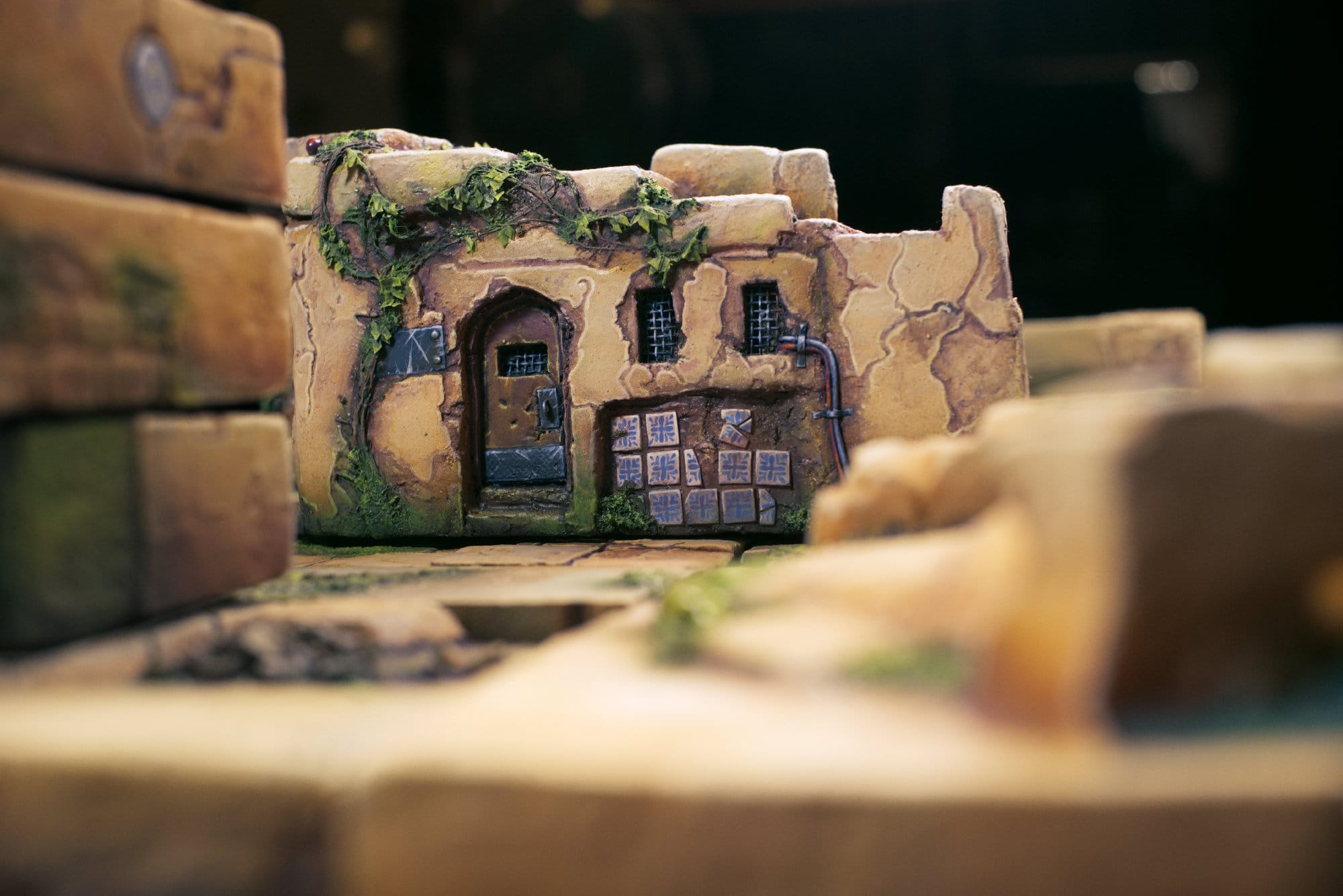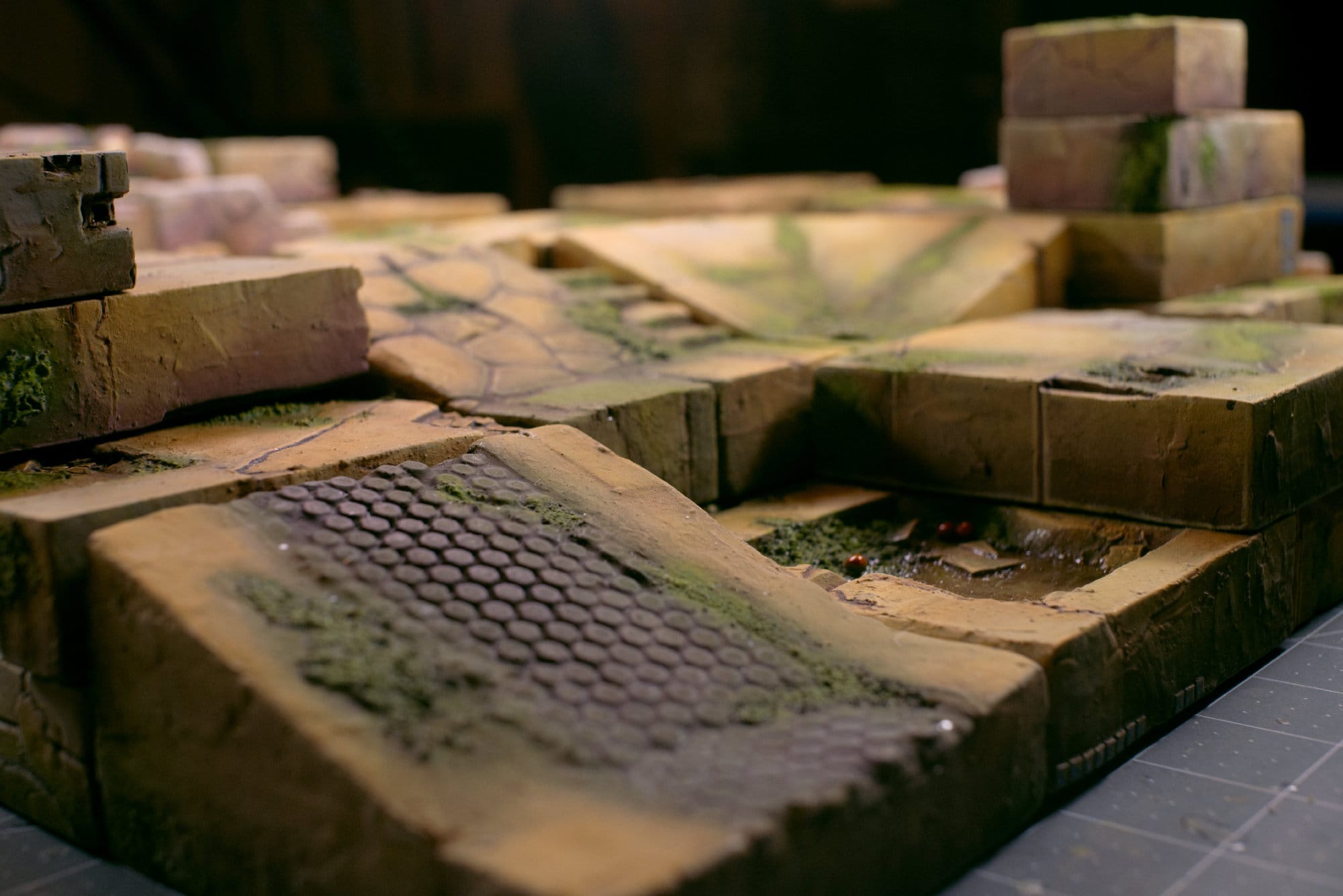🌆 CRF-006: City Tiles
A feature-length Paradiso Craft video about making chaotic yet modular city terrain

So: I just released a video about making a whole new system of terrain for tabletop games, featuring magnets, modularity, and a bit of mess. There are a lot of tips, tricks, and techniques in there, plus a story about an Osman painter who stirs up some serious trouble (and the city itself!) It's also almost an hour and a half long, oops.
I hope you like it!
About the tile system
Modular terrain tiles for tabletop games are nothing new. You may have seen Black Magic Craft's classic 3"×3"×½" tiles and the numerous others they've inspired over the years. The RP Archive, for example, has made very slick magnetized versions in the same dimensions. These, at least initially, were conceived of as "dungeon tiles," a way to create layouts for dungeon crawls in tabletop RPGs.
My system is inspired by those that came before it, but it has its differences. My tiles certainly could be used for describing dungeon layouts, but they are really built for creating a game board on which to play tabletop skirmish games like Mordheim, Sword Weirdos, 1490 Doom, Trench Crusade, etc.
The most obvious difference is that my default tiles are chunkier than the Black Magic Craft standard, at 4"×4"×1", though the system works with any size as long as length and width are multiples of 2".

By ensuring that the tile width and depth dimensions are multiples of 2", I can insert a pair of magnets with alternating polarities every 2 inches along the edge, and every edge will therefore have the same pattern of magnets. This means that I can stick them together in any orientation, provided they're lined up or offset by a multiple of 2".

Having a 1" height allows for much more variation in depth and detail on each tile, makes it very easy to add significant elevation changes in the terrain, and eliminates any fractional inches: I like a simple system where no matter the orientation, the magnets are on a 1" grid.
Also, all magnets on the top get the same polarity, and all the magnets on the bottom get the opposite. This way they can stack nicely and securely on top of each other.

Stylistically, my tiles are a bit different from the norm as well. Most terrain tiles use regular repeating stone patterns and/or 1" demarcations for a nice, uniform look. My only issue with this is that the neatness of the individual tile designs make the seams between tiles all the more obvious and glaring.
So I went with chaos instead. My tiles are cobbled together from bits of scrap foam with no attempt to make them cohere with textures flowing from one tile to the next. I'm trying to incorporate the seams as part of the aesthetic instead of hide them.
To paraphrase myself from the video: make your projects fit your resources, and your inspiration. There are enough things in life that get in the way of creating. The project itself doesn't need to be one of them.
So for me: I think chaotic, jumbled cities are fascinating and beautiful. I also have a lot of scrap foam lying around. I really enjoy sticking things together to make new shapes. And I don't like having to do too much planning—I'd rather just dig into a project quickly.
And that's a big part of why these turned out the way they did! I'm emulating the kind of urban chaos that I find so aesthetically inspiring, I'm using my excess scraps, I have a dead-simple magnet system so I don't have to think about it, and each tile can be unique, so I never get bored of making them.
This is meant to be the foundation of a larger system, which will incorporate more features like buildings, facades, waterways, and more. You'll see all of that in future episodes of Paradiso Craft.
Gallery






